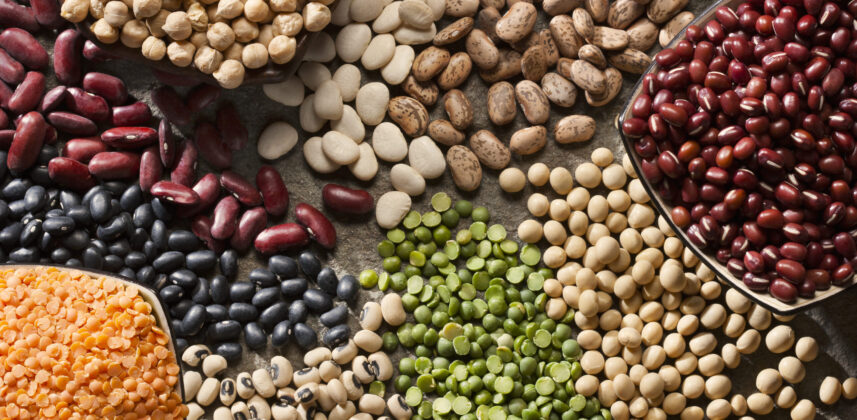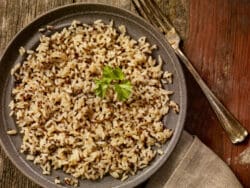Fibre is the weight loss secret weapon
Peter Paumgardhen | Last update: 29th October 2025
When it comes to weight loss, most of us focus on protein, calories, and fat. But fibre is the one nutrient that often gets overlooked: fibre. This is despite its incredible benefits for shedding pounds and keeping them off. Fibre might not be the cool foodie kid on the block, but it’s a simple and sustainable way to feel fuller for longer while improving your overall health. And might just be the secret weapon you need

Why fibre for weight loss is a powerhouse nutrient
Fibre for weight loss is gaining attention for good reason. It’s part of plant-based foods that your body can’t digest. Instead of being broken down and absorbed like other nutrients, it passes through your digestive system, helping you feel full and satisfied which is one of the key benefits of fibre for weight loss. But that’s not all it does.
Fibre also:
- Slows digestion: reducing hunger and preventing blood sugar spikes that can lead to cravings.
- Adds volume without calories: meaning you can eat larger portions without consuming too many calories.
- Feeds gut bacteria: promoting a healthy microbiome, which research suggests may play a role in weight regulation.
- Burns energy during digestion: your body works harder to process fibre, helping you burn a few extra calories along the way.
Kristy Thomas, at Prowise Healthcare, says:
Because GLP-1s promote abdominal fullness, which contributes to satiety, adding fibre to a meal helps you feel full longer and also stabilizes blood sugar levels.
How much fibre do you really need?
Experts recommend 24 grams of fibre per day for women and 38 grams for men. If that sounds like a lot, don’t worry. If you’re aiming to use fibre for weight loss, a good rule of thumb is to aim for 14 grams per 1,000 calories consumed. Building up slowly can help prevent bloating or discomfort as your body adjusts. “But what does that look like?’ I hear you cry…
Foods to boost your fibre intake
Adding fibre doesn’t have to mean a complete overhaul. Here are some easy swaps and additions, based on UK portion sizes and guidance (adults should aim for 30g of fibre a day, per NHS).
Kristy says: Optimizing the benefits of GLP-1s and long-term results of the medications can be achieved by having fibre at each meal and snack.
Vegetables
(Values per 80g serving – the UK standard for one portion of veg – think of 80g as about three heaped tablespoons of cooked vegetables, two large broccoli spears, or a small bowl of salad).
Broccoli (boiled) ~2.6g fibre per 80g serving
Carrots (raw) ~2.8g fibre per 80g serving
Spinach (boiled) ~2.2g fibre per 80g serving
Fruits
(Values per typical UK portion)
Raspberries (fresh) ~6.5g fibre per 80g serving
Pears (with skin) ~3.8g fibre per medium pear (~150g)
Apples (with skin) ~3.6g fibre per medium apple (~150g)
Grains
(Cooked weight unless stated otherwise)
Quinoa (cooked) ~2.2g fibre per 100g (around 3.3g per 150g serving)
Oats (dry) ~4g fibre per 40g portion (standard UK porridge portion)
Brown rice (cooked) ~1.8g fibre per 100g (around 2.7g per 150g serving)
Legumes
(Cooked)
Lentils (cooked) ~4.5g fibre per 100g
Chickpeas (cooked) ~5.5g fibre per 100g
Black beans (cooked) ~6g fibre per 100g
Seeds
(UK average portion)
Chia seeds ~9.8g fibre per 25g (1 tbsp ≈ 12g = ~4.7g fibre)
Flaxseeds (ground) ~7g fibre per 20g (around 3.5g per tbsp)
Sunflower seeds ~2.1g fibre per 20g (about 1 tbsp)

Fibre-friendly meal ideas
- Breakfast: Start your day with overnight oats topped with raspberries and chia seeds.
- Lunch: Enjoy a quinoa and black bean salad with lots of colourful veggies.
- Dinner: Try a hearty lentil soup with a slice of wholegrain bread.
- Snacks: Munch on carrot sticks and hummus or grab an apple with almond butter.
Each of these meals helps you get more fibre for weight loss into your day, without much effort.
Fibre for weight loss and emotional eating
Many of us turn to food as a source of comfort, and that often means reaching for high-calorie, low-nutrient snacks. Fibre for weight loss can help break this cycle by promoting steadier blood sugar levels and long-lasting fullness. High-fibre foods take longer to chew, giving your brain time to register fullness. They also help stabilise blood sugar levels, reducing the highs and lows that can trigger cravings.
Making fibre-rich foods the foundation of your meals doesn’t just support your weight-loss goals; it also creates a more balanced relationship with food. Whether it’s a warm bowl of oatmeal on a cold morning or a crunchy salad at lunch, these choices can feel satisfying without the guilt.
Common concerns about fibre
If you’ve avoided fibre-rich foods because of bloating or gas, you’re not alone. The key is to increase your intake gradually and drink plenty of water to help your body process it. Fibre supplements, like psyllium husk, can also be useful but are best used to fill gaps, not as a replacement for whole foods.

Does fibre really help with weight loss?
Research suggests that fibre for weight loss truly works, and not just in theory. A study published in the Annals of Internal Medicine found that people who simply aimed to eat 30 grams of fibre daily lost nearly as much weight as those following more complex diets. The bonus? They also improved their cholesterol and blood pressure levels.
Another study in The Journal of Nutrition found that higher fibre intake was associated with greater adherence to dietary plans, suggesting it can help you stick with your goals long term. So, if consistency has been your struggle, fibre might be your best ally.
We also know that fibre feeds healthy gut bacteria that may further help with weight management as well as improve metabolic health – Kristy
And lastly, it can help with that common side effect many of you have been experiencing – constipation. Fibre helps you go to the loo by adding bulk and softening the stool, making it easier to pass and actually promoting regular bowel movements (the nirvana of life as we get older).
Fiber also helps digestion and mitigates the side effects of GLP-1 medications, such as constipation, which is common – Kristy
Ready to give fibre the spotlight it deserves?
If you’re looking for sustainable ways to feel more in control of your hunger and make healthier food choices, adding more fibre to your diet could be the answer. Plus, it’s an approach that fits easily into any weight-loss treatment plan, whether you’re relying on medication, lifestyle changes, or both.
Have you already started adding more fibre to your meals? What’s your go-to fibre-rich food? Share your tips, favourite recipes, or even your struggles in our SlimrChats. Your experience might be exactly what someone else needs to stay motivated.